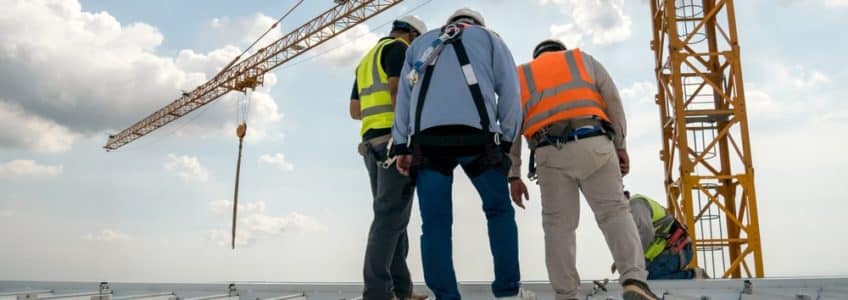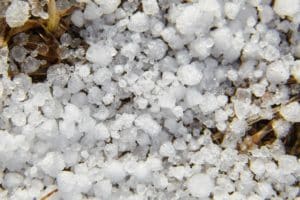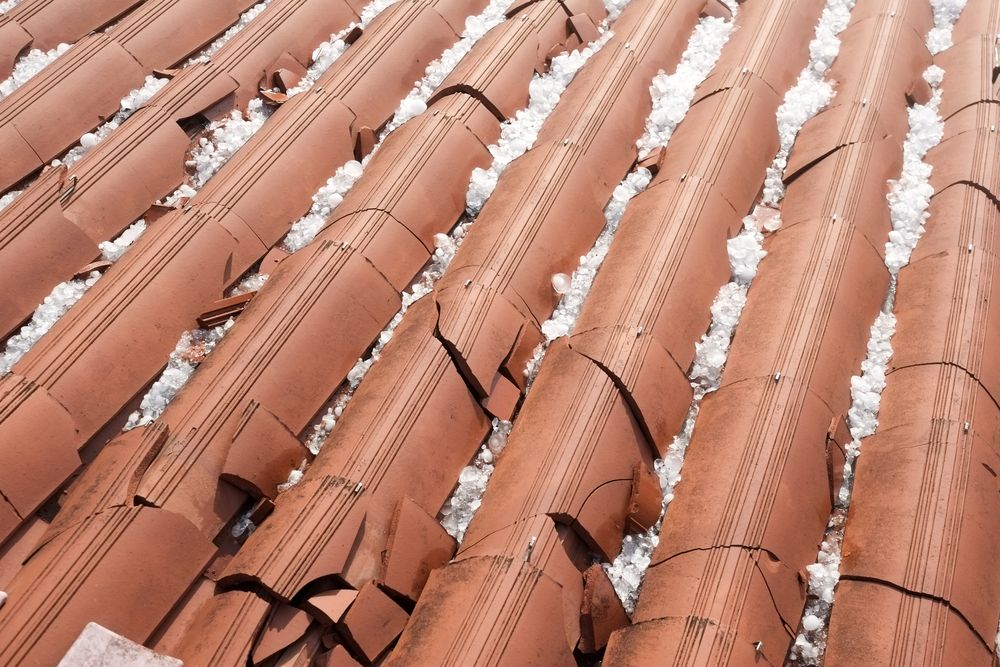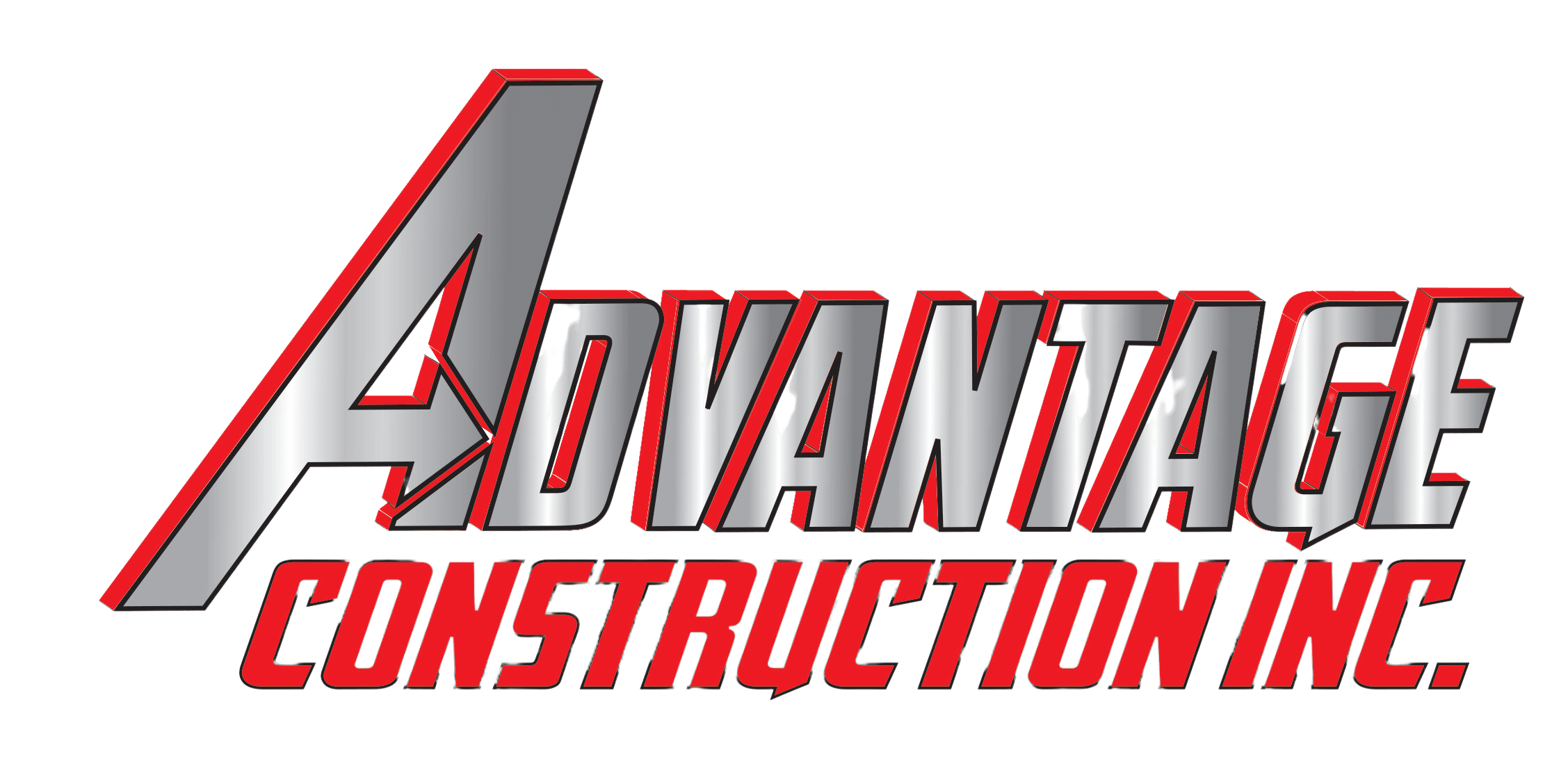
If you just experienced a hailstorm in your area, you may be worried about your roof and wondering what it looks like. What does hail damage on a roof look like? How can you tell if your roof is damaged? Keep reading for all the answers.
Hail Damage Variables
Before knowing the signs of hail damage, it’s important to understand why there are so many different signs and how they’re caused. Below is a brief explanation of the variables that affect the damage to your roof.
Hail Shape
 The shape of the hail chunks will determine how much they damage your roof and what kind of damage they cause. More spherical hailstones will cause more structural damage, like massive dents and shattered shingles. But hailstones can also be more dagger-shaped and flat, causing scratches and usually less damage.
The shape of the hail chunks will determine how much they damage your roof and what kind of damage they cause. More spherical hailstones will cause more structural damage, like massive dents and shattered shingles. But hailstones can also be more dagger-shaped and flat, causing scratches and usually less damage.
Hail Size
Hail size is one of the most impactful variables. Typically, the larger the hail chunks, the more likely your roof will be damaged. Hail can range from 1-inch in diameter, about the size of a quarter, all the way up to a 2.5-inch diameter, which is about the size of a softball.
Hail Density
A massive hailstone may cause little to no damage if the density is low. A small, more dense hailstone can cause more harm than a softball-sized, low-density hailstone. While hail is like ice, it can also be more soft. Sometimes, hail is a combination of light snow and heavy ice. Usually, hail increases in density when the temperature is lower.
Wind Direction
The direction that the wind carries the hail can also result in more or less damage to your roof. One side of your home may be damaged, while the other is fine. Weaker windstorms may actually cause worse damage, affecting every part of your roof. Wind direction is one of the less impactful variables, but still a factor.
Wind Strength
Wind strength and speed are much more impactful than wind direction. Hailstones typically hit your roof between 44 and 72 miles per hour. So when hail is falling at the speed of a car, you can expect significant damage. If you experience a hailstorm, checking the wind speed during the storm can help you decide if you need to worry about your roof.
Roofing Materials
The materials used to make your roof will also change how much the hail damages your roof. Roofs can be made of rolled roofing, membrane roofing, asphalt shingles, metal roofing, shakes, wood shingles, clay tiles, and more.
Both soft and hard materials are vulnerable to hail damage. Softer materials are prone to bruising and dents, while harder materials can shatter or crack.
The age of your roofing materials is also significant. Older materials are more likely to be compromised by hail, while new roofing will be more sturdy and resistant.
Signs of Hail Damage
Below are signs of hail damage you may find on your roof following a severe hailstorm.
Dents, Marks, and Dings
The most obvious sign of hail damage on a roof is often dents, marks, and noticeable dings. Look for different marks in several places on the roof. There will likely be multiple marks, scuffs, and dents if it is hail damage. The marks will also be irregular and not in a steady pattern. Some types of roof damage will cause clear patterns, but hail damage will be more random.
Granule Loss
If you’ve ever seen a roof shingle up close, you’ll notice small granules, almost like rocky sand. When your roof suffers significant hail damage, you’ll notice spots where the granules have been stripped due to the impact. These granules protect your roof and shingles, so losing granules due to hail weakens your roof.
Damaged Shingles
Another sign of damage is fractured, cracked, or broken shingles. Shingles are tough materials that can withstand wind, rain, and other harsh elements. Hail is one of the few natural elements that can destroy or break shingles. If the hail storm was particularly horrible, you may even find dislodged shingles on the ground around your home.
Damaged Fiberglass
Most shingles feature layers of different materials designed to protect one another. The fiberglass layer can be damaged or exposed when hail hits your roof.
Fiberglass is beneath the top layer, so it can be damaged but not exposed, making it hard to detect. But if it is exposed, it weakens your roof. Unfortunately, this sign of damage is not obvious and usually takes a trained professional eye to notice.
Weak Self-Sealing
All shingles have a self-seal strip that prevents water from seeping into your home, but hail can weaken the self-sealing properties. High winds and dense hailstones will weaken your shingles, possibly leading to leaks, tears, and cracks in the self-sealing strip.
Soft Areas
A sign that your roof has hail damage is if there are soft areas that feel weakened or bouncy. These tender areas can be created by the impact or by pieces of hail melting on the roof. Unfortunately, this sign of damage is hard to notice unless you’re climbing around on your roof looking for soft spots.
How Hail Damage Impacts a Home
Hailstorms can substantially harm your home in many ways. As discussed, the brunt of the damage is often to the roof, but it’s more than cosmetic. Hailstones also impact other aspects of your home, such as the siding, windows, gutters, chimneys, and even walkways.
Hail damage can cause your home to have roof leaks, broken windows, weakened seals, water damage, cosmetic damage, and poor air quality, among other things.
- Roof leaks
- Water damage
- Broken windows
- Weakened seals
- Poor air quality
- Cosmetic damage
While damage to your home is a possibility during a hailstorm, your home isn’t the only thing at risk. Your car and other vehicles may get dented, or the windows may crack. And the worst-case scenario, hailstones can cause serious injuries or even death to people in the area, so these tiny ice rocks are very dangerous.
Repairing Hail Damage (Is It Possible?)
If your home has suffered substantial hail damage, don’t worry, it can be fixed. Some hail damage repairs can take a few hours, while more comprehensive ones can take a few days. You may need just a few shingles replaced, or an entirely new roof.
Repairing hail damage on your roof will start with an inspection, where a professional will assess the extent of the damage and help you understand what needs fixing.
Will Insurance Cover Hail Damage?
When it comes to insurance coverage, nothing is ever guaranteed. Luckily, most home insurance policies and companies will cover the cost to repair hail damage, especially damage concerning your roof.
Home insurance will often help with most of the cost of repairs to your roof, siding, and windows, so be sure to file an insurance claim and schedule an inspection as soon as possible.
Contact Advantage Construction for Inspection and Repairs
 Hail is dangerous, but climbing up on your roof and trying to replace the shingles by yourself is even riskier. Even if you just want to go onto the roof to see the damage for yourself, it’s not a good idea.
Hail is dangerous, but climbing up on your roof and trying to replace the shingles by yourself is even riskier. Even if you just want to go onto the roof to see the damage for yourself, it’s not a good idea.
We are experts when it comes to hail damage, and keeping your home in tip-top shape. Before putting yourself in harm’s way, we encourage you to give us a call to set up your roof inspection, so you can avoid water damage and other problems caused by hail damage.
Contact Advantage Construction today to get started.
